The drachma was the currency used in Greece during several periods in its history:
- An ancient Greek currency unit issued by many Greek city states during a period of ten centuries, from the Archaic period throughout the Classical period, the Hellenistic period up to the Roman period under Greek Imperial Coinage.
- Three modern Greek currencies, the first introduced in 1832 by the Greek King Otto (Όθων) and the last replaced by the euro in 2001. The euro did not begin circulating until 2001 but the exchange rate was fixed on 19 June 2000, with legal introduction of the euro taking place in January 2002.

The denarius was the standard Roman silver coin from its introduction in the Second Punic War c. 211 BC to the reign of Gordian III, when it was gradually replaced by the antoninianus. It continued to be minted in very small quantities, likely for ceremonial purposes, until and through the Tetrarchy (293–313).

Electrum is a naturally occurring alloy of gold and silver, with trace amounts of copper and other metals. Its color ranges from pale to bright yellow, depending on the proportions of gold and silver. It has been produced artificially, and is also known as "green gold".

The as, occasionally assarius was a bronze, and later copper, coin used during the Roman Republic and Roman Empire.

Roman currency for most of Roman history consisted of gold, silver, bronze, orichalcum and copper coinage. From its introduction to the Republic, during the third century BC, well into Imperial times, Roman currency saw many changes in form, denomination, and composition. A persistent feature was the inflationary debasement and replacement of coins over the centuries. Notable examples of this followed the reforms of Diocletian. This trend continued into Byzantine times.
Byzantine currency, money used in the Eastern Roman Empire after the fall of the West, consisted of mainly two types of coins: the gold solidus and a variety of clearly valued bronze coins. By the end of the empire the currency was issued only in silver stavrata and minor copper coins with no gold issue.

The solidus or nomisma was a highly pure gold coin issued in the Late Roman Empire and Byzantine Empire. The early 4th century saw the solidus introduced in mintage as a successor to the aureus, which was permanently replaced thereafter by the new coin, whose weight of about 4.5 grams remained relatively constant for seven centuries. In the Byzantine Empire, the solidus or nomisma remained a highly pure gold coin until the 11th century, when several Byzantine emperors began to strike the coin with less and less gold. The nomisma was finally abolished by Alexius I in 1092, who replaced it with the hyperpyron, which also came to be known as a "bezant". The Byzantine solidus also inspired the originally slightly less pure dinar issued by the Muslim Caliphate. In Western Europe, the solidus was the main gold coin of commerce from late Roman times to Pepin the Short's currency reform, which introduced the silver-based pound/shilling/penny system.

The Edict on Maximum Prices was issued in 301 AD by Diocletian. The document denounces monopolists and sets maximum prices and wages for all important articles and services.
Roman Republican currency refers to the coinage struck by the various magistrates of the Roman Republic, to be used as legal tender. In modern times, the abbreviation RRC, "Roman Republican Coinage" originally the name of a reference work on the topic by Michael H. Crawford, has come to be used as an identifying tag for coins assigned a number in that work, such as RRC 367.
From c. 1124 until 1709 the coinage of Scotland was unique, and minted locally. A wide variety of coins, such as the plack, bodle, bawbee, dollar and ryal were produced over that time. For trading purposes coins of Northumbria and various other places had been used before that time; and since 1709 those of the Kingdom of Great Britain, and then of the UK.
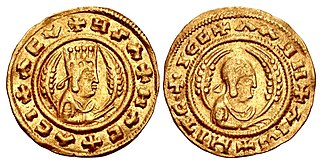
Aksumite currency was coinage produced and used within the Kingdom of Aksum centered in present-day Eritrea and Ethiopia. Its mintages were issued and circulated from the reign of King Endubis around AD 270 until it began its decline in the first half of the 7th century. During the succeeding medieval period, Mogadishu currency, minted by the Sultanate of Mogadishu, was the most widely circulated currency in the Horn of Africa.

Silver coins are considered the oldest mass-produced form of coinage. Silver has been used as a coinage metal since the times of the Greeks; their silver drachmas were popular trade coins. The ancient Persians used silver coins between 612–330 BC. Before 1797, British pennies were made of silver.

The Achaemenid Empire issued coins from 520 BC–450 BC to 330 BC. The Persian daric was the first gold coin which, along with a similar silver coin, the siglos represented the first bimetallic monetary standard. It seems that before the Persians issued their own coinage, a continuation of Lydian coinage under Persian rule is likely. Achaemenid coinage includes the official imperial issues, as well as coins issued by the Achaemenid provincial governors (satraps), such as those stationed in Asia Minor.
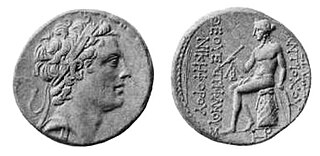
The coinage of the Seleucid Empire is based on the coins of Alexander the Great, which in turn were based on Athenian coinage of the Attic weight. Many mints and different issues are defined, with mainly base and silver coinage being in abundance. A large concentration of mints existed in the Seleucid Syria, as the Mediterranean parts of the empire were more reliant on coinage in economic function.
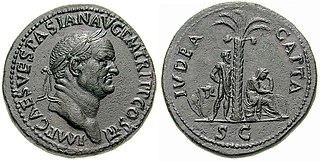
Judaea Capta coins were a series of commemorative coins originally issued by the Roman Emperor Vespasian to celebrate the capture of Judaea and the destruction of the Second Jewish Temple by his son Titus in 70 CE during the First Jewish Revolt. There are several variants of the coinage. The reverse of the coins may show a female seated right in an attitude of mourning at the base of a palm tree, with either a captive bearded male standing left, with his hands bound behind his back, or the standing figure of the victorious emperor, or the goddess Victoria, with a trophy of weapons, shields, and helmets to the left.
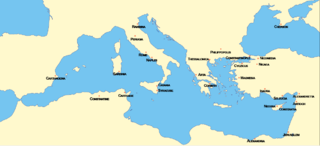
The East Roman or Byzantine Empire established and operated several mints throughout its history (330–1453). Aside from the main metropolitan mint in the capital, Constantinople, a varying number of provincial mints were also established in other urban centres, especially during the 6th century. Most provincial mints except for Syracuse were closed or lost to invasions by the mid-7th century. After the loss of Syracuse in 878, Constantinople became the sole mint for gold and silver coinage until the late 11th century, when major provincial mints began to re-appear. Many mints, both imperial and, as the Byzantine world fragmented, belonging to autonomous local rulers, were operated in the 12th to 14th centuries. Constantinople and Trebizond, the seat of the independent Empire of Trebizond (1204–1461), survived until their conquest by the Ottoman Turks in the mid-15th century.
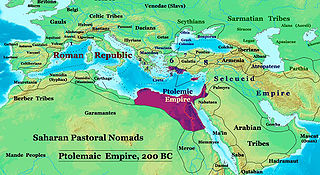
Coinage was used in the Ptolemaic Kingdom during the last dynasty of Egypt and, briefly, during Roman rule of Egypt.

Bithynian coinage refers to coinage struck by the Kingdom of Bithynia that was situated on the coast of the Black Sea.

Greek coinage of Italy and Sicily originated from local Italiotes and Siceliotes who formed numerous city states. These Hellenistic communities descended from Greek migrants. Southern Italy was so thoroughly hellenized that it was known as the Magna Graecia. Each of the polities struck their own coinage.

Legionary denarii is the modern name for a series of Roman silver denarius coins issued by Mark Antony in the eastern Mediterranean during the last war of the Roman Republic from 32 to 31 BC, in the lead up to the Battle of Actium. The coinage is also referred to by numismatists as RRC 544/1-39, after its designation in M. H. Crawford, Roman Republican Coinage (1975).




















